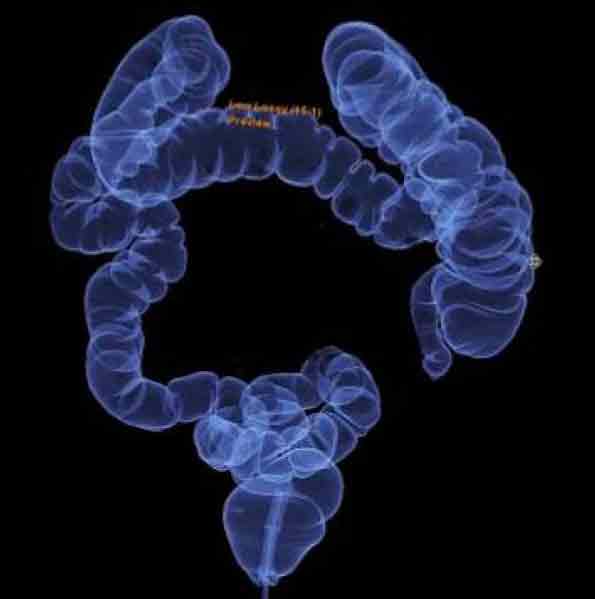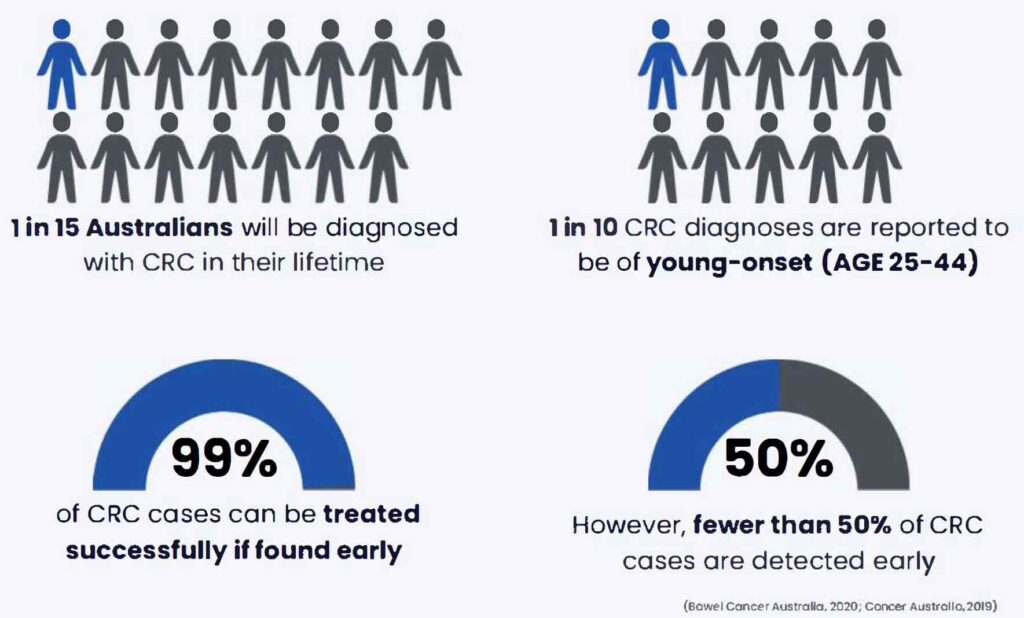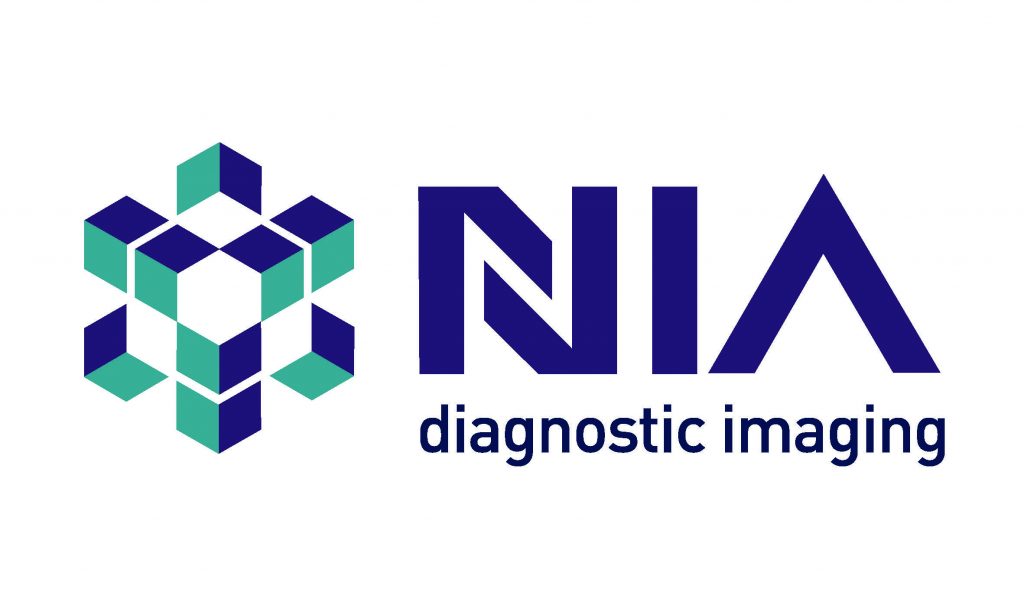NIA Diagnostic Imaging, 14th May 2023

Colorectal cancer (also known as bowel cancer) is the third most prevalent type of newly diagnosed cancer and the second deadliest type of cancer in Australia. CRC generally arises from the inner lining of the colon and is often characterised by polyps, which, if left undetected, can transform into aggressive malignancies. Despite the fact that optic colonoscopy is the golden standard for the detection of colorectal cancer, CT colonography (CTC) is regarded as a non-inferior alternative. How useful and reliable is CTC? What occurs during CTC?

CT colonography has high sensitivity and specificity comparable to that of an optical colonoscopy for the detection of CRC and polyps. For polyps 6mm or larger and 10mm or larger, the reported sensitivity of CTC was 85.3% and 90.8%, respectively. For sessile serrated and traditional serrated polyps, the consumption of oral contrast in CTC has been shown to increase both detection rates, as well as diagnostic confidence.
Key advantages of CT Colonography over optic colonoscopies include:
- Less invasive; no sedation or injections are required
- Significantly safer; perforation rate is l0-20x lower than colonoscopies
- Enables extracolonic evaluation; ability to assess structures outside of the colon
- Shorter procedural time
- Less expensive
At NIA Diagnostic Imaging, patients are required to adhere to a strict diet prior to their CT colonography appointment to cleanse their bowels, hence improving visualisation of the gastrointestinal mucosa. This diet consists of low-fibre foods, as well as the use of a colon cleansing agent (Picoprep) and an oral contrast (loscan) to induce bowel movement and allow for faecal tagging, respectively. Patients must also fast for a minimum of 6 hours prior to their appointment and drink plenty of water to stay hydrated.
During the appointment, the patient will be asked to change into a medical gown, before lying on the CT table on their side. The radiologist will then insert a catheter into the rectum and begin pumping air into it to open the patient’s bowels, allowing for greater visibility.
Primarily supine and prone views are only needed; however, if particular regions of the colon are obscured, additional decubitus images may be captured to aid in diagnosis.


References:
Abdominal Key. (2020, June 26). Colon Distension. Abdominal Key.
https:// abdominalkey.com/ colon-distension/Bowel Cancer Australia. (2020). Bowel Cancer Facts – Bowel Cancer Australia. www.bowelcanceraustralia.org. https://www.bowelcanceraustralia.org/facts
Cancer Australia. (2019, December 18 ). Bowel cancer ( Colorectal cancer) in Australia statistics. www.canceraustralia.gov.au. https://www.canceraustralia.gov.au/ cancertypes/bowel-cancer / statistics
Cancer Council. (2019). Bowel cancer. www.cancer.org.au; Cancer Council. https:/ / www.cancer.org.au/ cancer-information/ types-of-cancer/ bowel-cancer
Cancer Research UK. (2022). CT colonography. www.cancerresearchuk.org. https://www.cancerresearchuk.org/about-cancer/tests-and-scans/ctcolonography#:~:text=You%20lie%20on%20the%20couch
Kim, D. H., Hinshaw, J. L., Lubner, M. G., Munoz del Rio, A., Pooler, B. D., & Pickhardt, P. J. (2014). Contrast coating for the surface of flat polyps at CT colonography: a marker for detection. European Radiology, 24( 4), 940-946. https:// doi.org/10.1007 /s00330-014-3095-z
Lee, S. Z., Schubert, J. P., Prowse, S. J. B., & Bryant, R. V. (2022). Are we underutilising computer tomography colonography in Australia? Internal Medicine Journal, 52(5), 864- 867. https://doi.org/10.llll/imj.15778
Pickhardt, P. J., Correale, L., Delsanto, S., Regge, D., & Hassan, C. (2018 ). CT Colonography Performance for the Detection of Polyps and Cancer in Adults 65 Years Old: Systematic Review and Meta-Analysis. American Journal of Roentgenology, 211(1), 40-51. https:// doi.org/10.2214/ ajr.18.19515
Ricci, Z., Kobi, M., & Yee, J. (2020 ). CT Colonography for Colorectal Cancer Screening. Journal of Radiology Nursing, 39(3), 185-193. https://doi.org/10.1016/j.jradnu.2020.04.005
sha, J., chen, J., Iv, X., liu, S., chen, R., & zhang, Z. (2020 ). Computed tomography colonography versus colonoscopy for detection of colorectal cancer: a diagnostic performance study. BMC Medical Imaging, 20(1). https://doi.org/10.ll86/sl2880-020-00446-7
Silva, A. C., Wellnitz, C. V., & Hara, A. K. (2006). Three-dimensional Virtual Dissection at CT Colonography: Unraveling the Colon to Search for Lesions. RadioGraphics, 26( 6 ), 1669- 1686. https://doi.org/10.1148/rg.266055199
UCSF Imaging. (2013). UCSF Radiology: The Advantages of Virtual Colonoscopy. www.youtube.com. https://www.youtube.com/watch?v= _2-iymhhxpM&t=3s
